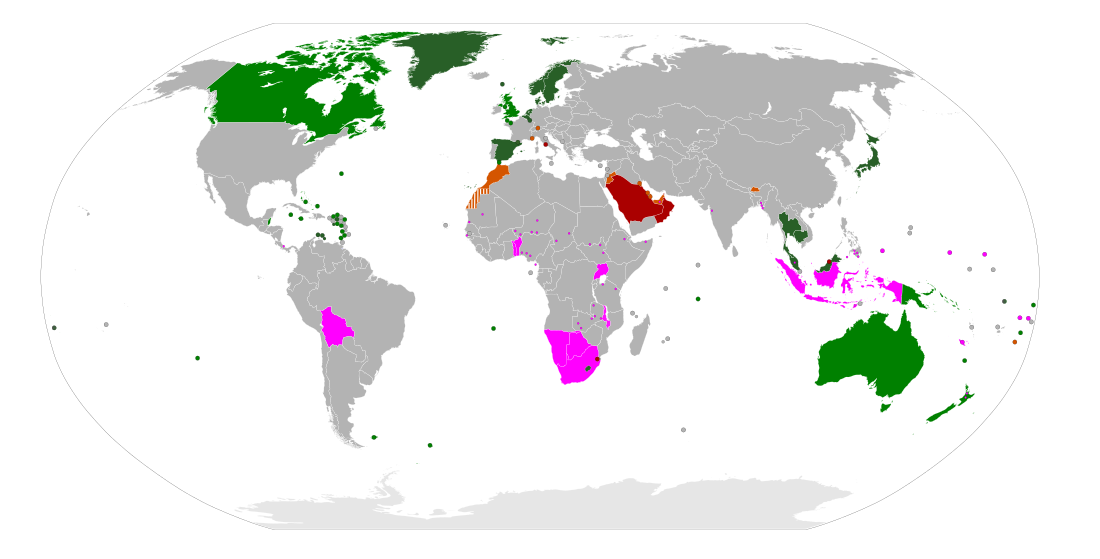Constitutional monarchy
type of monarchy in which power is restricted by a constitution From Wikipedia, the free encyclopedia
Remove ads
A constitutional monarchy is a form of monarchy. In a constitutional monarchy, a king or queen is the official head of state. However, their powers are limited by a constitution and they usually do not have much real power, as the legislative branch is the primary governing body. A constitutional monarchy is different than an absolute monarchy because in absolute monarchies, the monarch is able to rule with full power, and is able to change the laws freely.

Semi-constitutional monarchies
Parliamentary constitutional monarchies
Remove ads
Creation
Constitutional monarchy first emerged in England. At first, the British monarchy was absolute. However, the nobility under King John felt that the king had abused his power, and forced him to sign a document called Magna Carta.[1] This document limited the powers of the king and made him somewhat responsible for the wellbeing of his subjects. The document, however was more focused on maintaining the ability of the nobles to have a say in what the king did.
Contemporary constitutional monarchies include the United Kingdom and Commonwealth realms, Belgium, Bhutan, Bahrain, Cambodia, Denmark, Japan, Jordan, Kuwait, Liechtenstein, Lesotho, Luxembourg, Malaysia, Monaco, Morocco, the Netherlands, Norway, Spain, Eswatini, Sweden, and Thailand.
Remove ads
List of current reigning monarchies
The following is a list of reigning monarchies. Except where noted, monarch selection is hereditary as directed by the state's constitution.
Remove ads
References
Wikiwand - on
Seamless Wikipedia browsing. On steroids.
Remove ads
